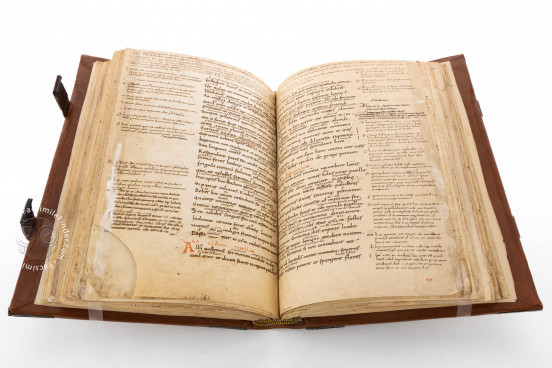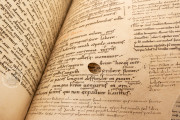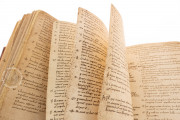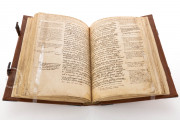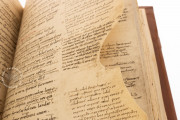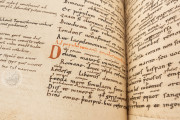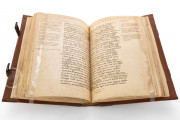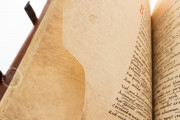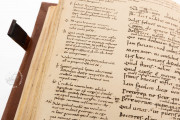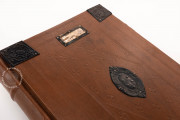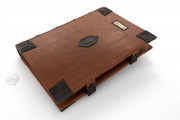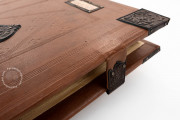Petrarch's Horace is a manuscript of the complete works of the ancient Roman poet Horace copied in the tenth century and acquired in Genoa by the great Italian Renaissance poet Petrarch in 1347. The manuscript's text of Horace's works includes extensive scholia—marginal explanations—falsely attributed to Helenius Acro in the early modern period. The manuscript has always been prized for Petrarch's annotations, which include summaries of Horace's texts and quotations from many ancient authors.
The manuscript's contents are three short biographies of Horace (fol. 1r), the Odes or Carmina (fols. 1v-56r), the treatise on poetry (fols. 56r-64v), the Epodes (fols. 65r-76v), the poems written in the circle of Augustus (fols. 76v-78r), the Epistles (fols. 78r-104r), and the Satires or Sermones (fols. 104r-140v).
Petrarch, the Humanist Poet
Francesco Petrarca (1304-1374), best known for his Italian-language poetry, was devoted to the study of the literature of Roman antiquity. Petrarch quoted the works of Horace (65-8 BCE) extensively in his writings. In this copy of his predecessor's works, he underlined passages in the treatise on poetry (Ars poetica), a text that prompted a response from Petrarch in the form of an ode.
Horace Explicated
The main text of Petrarch's manuscript of Horace is written in Caroline Minuscule, with the first letter of each line set off in the left margin. The commentary of pseudo-Arco fills the wide outer margins. It was written by the same scribe, also in Caroline Minuscule, at half the scale of the main text. Greek words in the scholia are rendered in Greek Majuscule without accents or aspiration marks.
The snippets of commentary are tied to the main text by letters of the alphabet, which proceed in order from A to Z, repeated again and again. There is also an interlinear gloss.
Horace Annotated
Petrarch's annotations, written in a neat Gothic Semitextualis, include passages quoted from ancient pagan authors—such as the Roman philosopher Seneca (d. 65 CE), the orator Cicero (106-43 BCE), the second-century BCE playwright Terence the African, and the first-century poets Ovid and Lucan—, the fourth-century grammarian and Virgil commentator Servius, as well as the early Christian authors Lactantius and Saint Augustine.
Valued for Petrarch's Annotations
Petrarch's fame in his own time meant that his manuscript of Horace was of interest from an early date. It passed through the hands of Ludovico Podocator (d. 1504), Bishop of Capaccio; Cosimo Pazzi (1466-1513), Bishop of Arezzo; and Lorenzo Ridolfi before entering the Laurentian library through the effort of Antonio Petrei (1498-1570), who acquired it from Ridolfi.
We have 1 facsimile edition of the manuscript "Petrarch's Horace": Orazio. Orazio Laurenziano facsimile edition, published by Typis Regiae Officinae Polygraphicae, 1933
Request Info / Price
